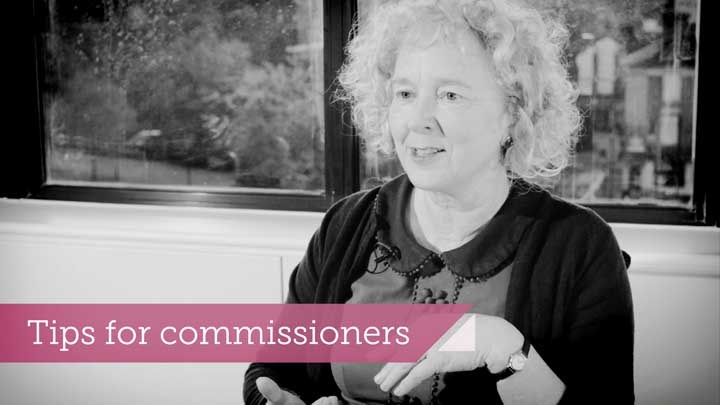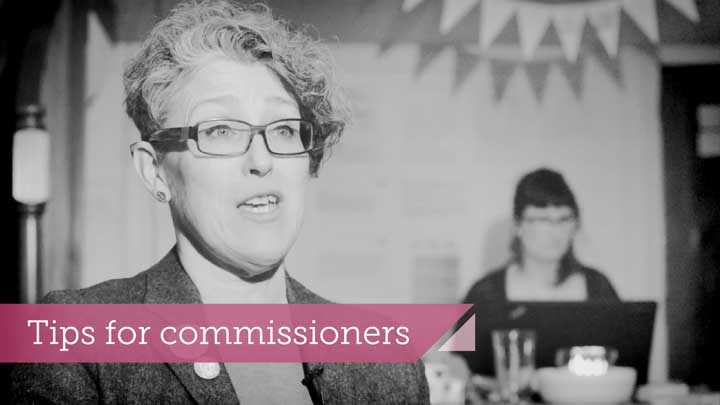Changing face of the public sector
Arts and culture have been funded through grants from the public sector for many years. In the future funding will be more likely to have specified outcomes attached and contracts may use Payment by Results. But there will also be significant opportunities to access new funding and the chance to embed arts and culture more into mainstream public services.
Many local authorities are becoming 'strategic commissioning authorities'. Knowing how European, national, county, unitary, borough/district and town councils work is important -what they are responsible for, what they might fund and how they might integrate to ‘co-commission’. Most local authorities will have a business portal where you can find out about the services being commissioned. They might also be aligning with other public services, like the Clinical Commissioning Groups (CCGs) for example.
Characteristics of different funders
Specific local government funding ring-fenced for the arts is less and less likely. Instead, local authorities who are commissioning whole services - like for example a service to meet older people's needs, or mental health services - would see creative or cultural services as a part of that provision. These complete services for whole communities often involve large programmes of delivery.
The way local authority commissioners operate their funding mechanisms is different to, say, trusts and foundations or the Arts Council. Trusts and foundations or grant givers ask for very loose accountability, and the Arts Council maintains an 'arms-length' policy but local authorities as commissioners will be more closely involved to ensure outcomes are achieved and public money is spent appropriately.
Legislation and policy
New policies and legislation are not only about the need for the UK to curtail its spending, they are also about a growing understanding that economic wealth is only part of what makes society prosperous. One example is the Social Value Act 2012, which requires public authorities to consider economic, social and environmental wellbeing when placing public service contracts. The cultural sector is well-placed to deliver social, economic (and sometimes environmental) benefits.
The Health and Social Care Act was also a significant re-focus, setting up Health and Wellbeing boards across England to be responsible for greater co-ordination.
Social value
The need to show more than economic value has actually been in place for some time including in the Treasury's 'Green Book' which councils use to appraise proposals before committing money to a programme, policy or project. The Green Book describes ways to do Cost-Benefit Analyses (CBA) that quantify a broader set of outcomes. However, it is now becoming more real for staff in local authorities to do the same especially where their managers, council members and the public are putting on pressure to demonstrate social value for money.
Changing face of the cultural sector

At the same time as changes to the public sector the structure of the cultural sector is shifting, and is likely to continue to change. The Arts Council’s responsibility for Museums, Libraries and Archives and the Bridge organisations’ strategic role for Children and Young People (CYP) are two examples. The Bridges have a role as a catalyst for those working with children and young people and could be approached for a strategic role in areas where the arts and cultural sector is not very networked. These roles may continue to develop but it is likely that a more joined-up approach encouraging local strategic partnerships will remain a focus.
A public health commissioner in Kent describes how his template for community services would be to see "significant and respected creative arts partners" alongside the district council.
Leadership and sustainability
The emerging role of the arts and culture in commissioning works well when the strategic players are working closely together. It is worth finding out if there is a local strategic vision for arts and culture or relevant leadership and if not, it is worth consulting with your Bridge organisation or local authority about developing these.
Sustainability is important to both cultural organisations and commissioners and in the long run these huge changes should create a more diverse 'market' to deliver broader, more diverse and in the end better services for the public. Working in partnership within and beyond your sector will enhance your ability to deliver on strategic agendas.






